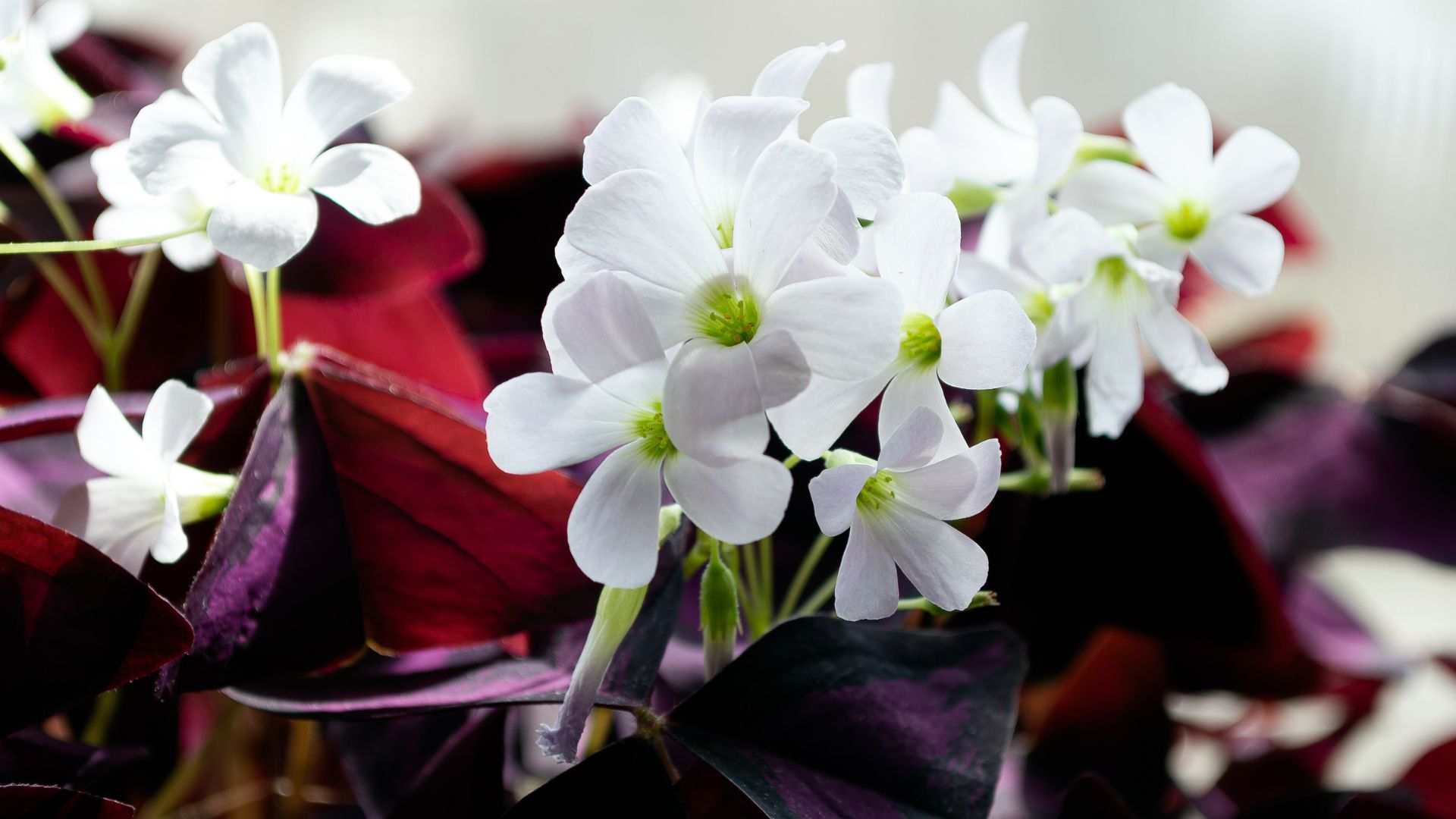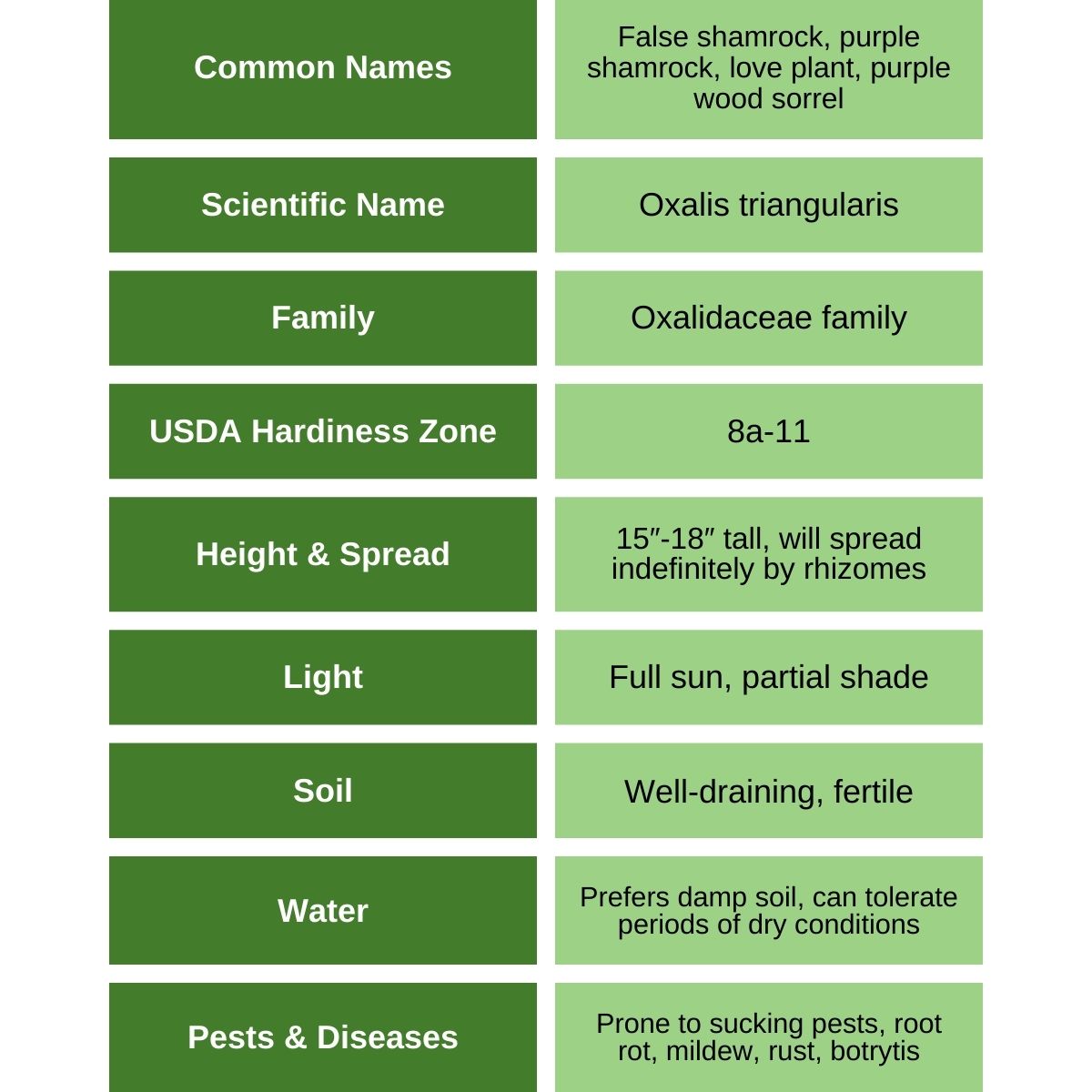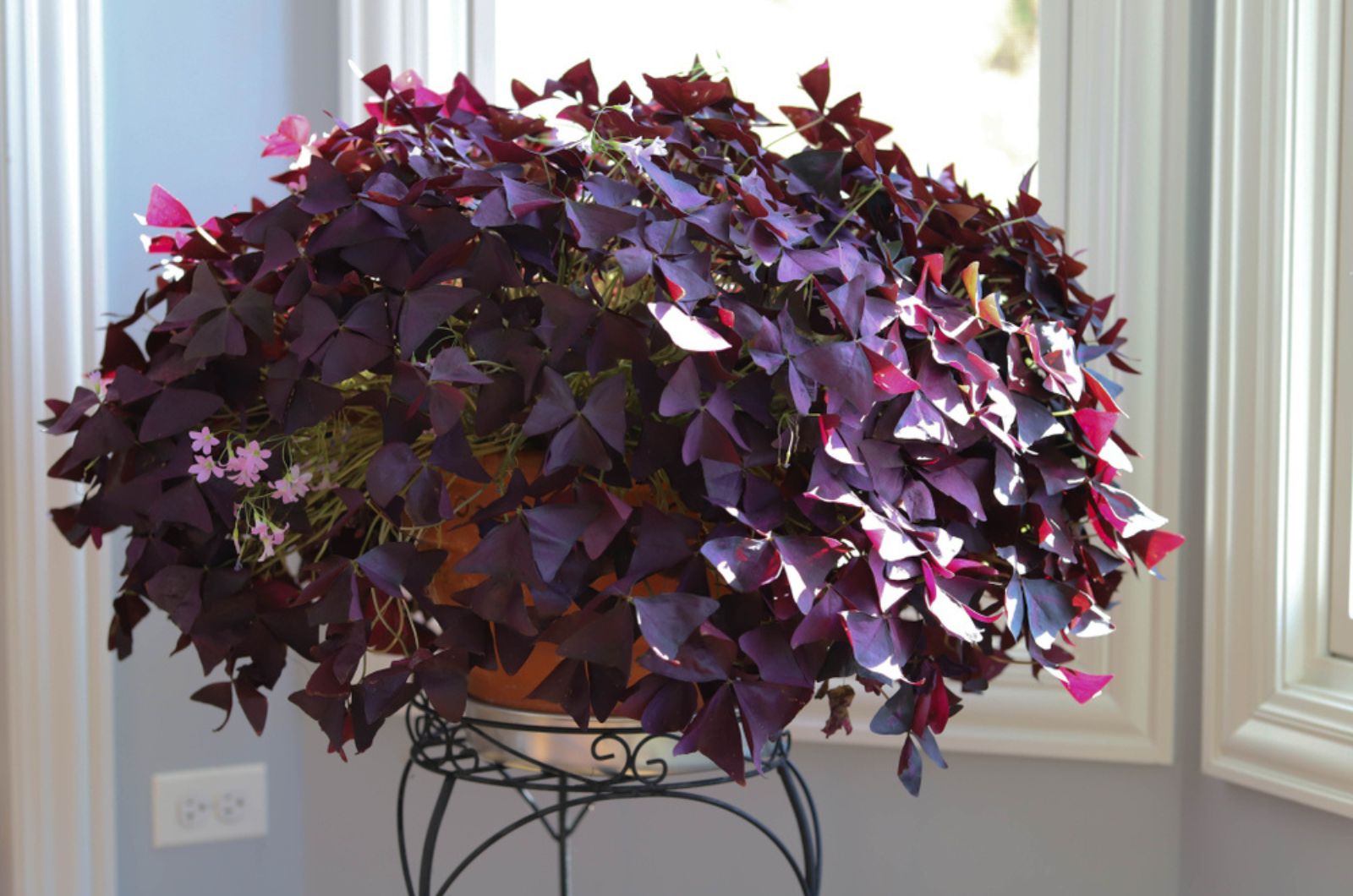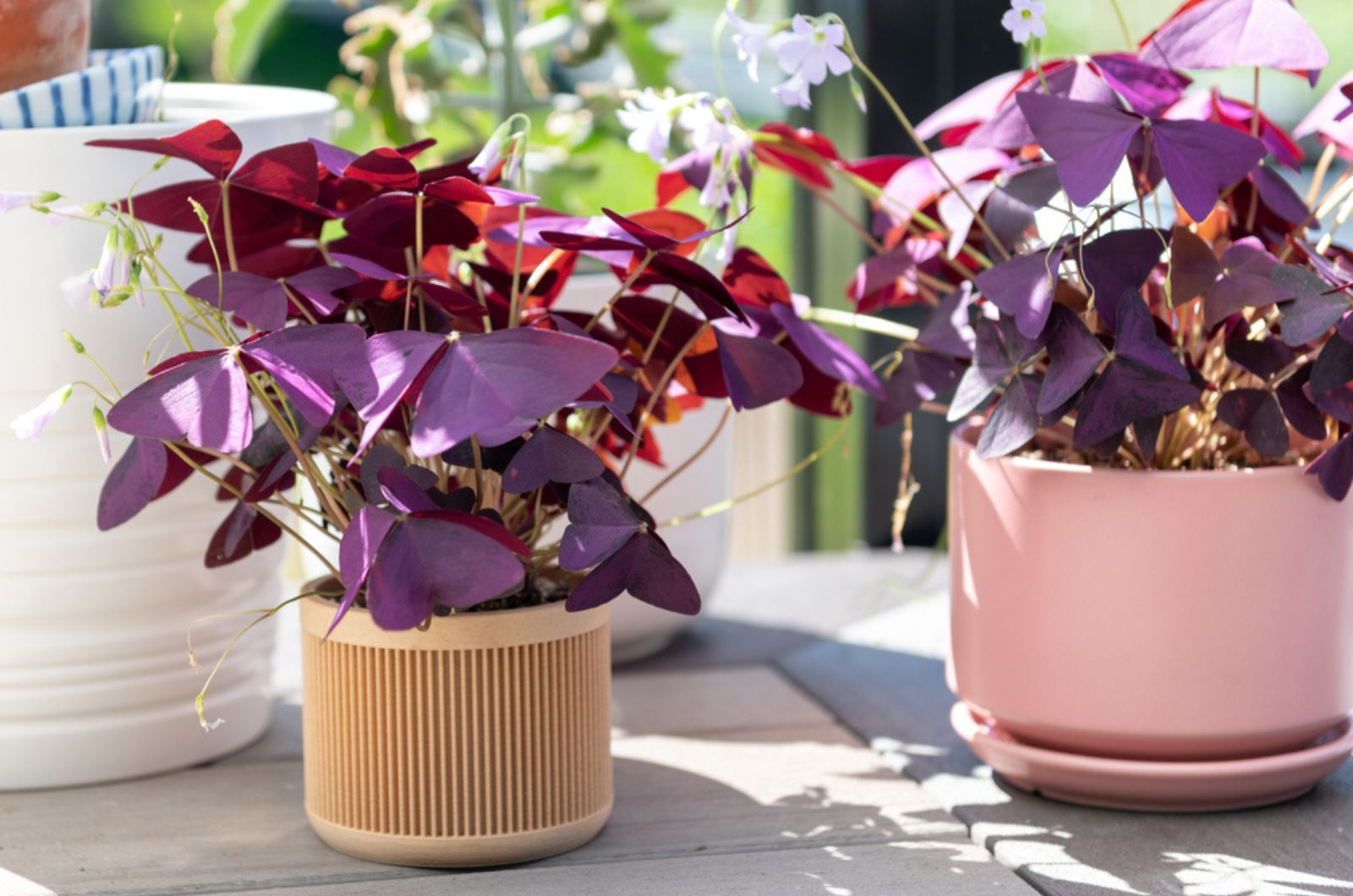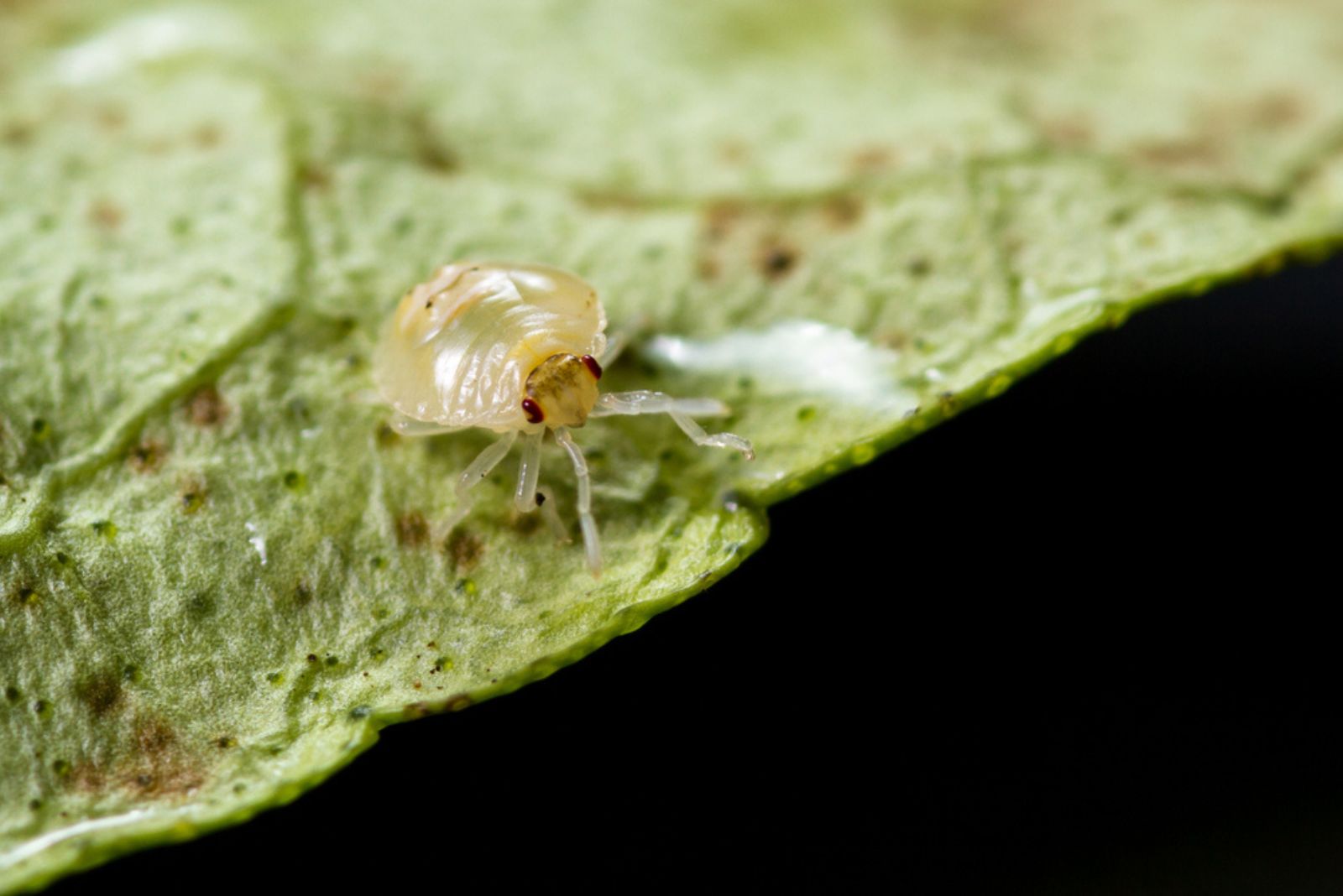Meet the charming Oxalis Triangularis, also known as the Purple Shamrock. This unusual plant produces distinctive triangular leaves that have a rich purple color, perfect for adding color to your living space.
Not only is this plant absolutely gorgeous, but it is also quite easy to take care of – full sun, well-draining soil, and some water is all it takes to keep the plant happy and healthy!
So, if you want to find out more about the extraordinary Oxalis triangularis, keep on reading!
What Is The Oxalis Triangularis?
First, check out the basic information:
Oxalis Triangularis, otherwise known as the Purple Shamrock or False Shamrock, is an eye-catching plant with three-lobed, triangular leaves, hence its scientific name – Oxalis triangularis.
However, its nickname “shamrock” is due to the leaves that look like a shamrock. But, despite its shamrock-like appearance, it’s not a true shamrock but rather a member of the Oxalidaceae family.
The false shamrock is native to Brazil. This plant has gained popularity due to its unique foliage that comes in different colors of burgundy, green, and deep purple.
What’s also interesting is that the plant’s leaves fold down like an umbrella during the night. In the morning, they open widely as soon as the sun rises – this is called nyctinasty, and many plants share this feature, including Prayer plants!
The plant also produces delicate white or pink flowers on slender stems – this plant just keeps surprising us! These five-petaled flowers with their soft colors truly add some elegance to your decor.
However, while it brings beauty and grace to your home, it’s important to note that the Oxalis Triangularis contains oxalic acid, which may be toxic in large quantities if ingested. Keep it out of reach if you have kids and pets running around!
Types Of Oxalis Triangularis
There are three types of subspecies: Papilionacea, Glabrifolia, and Lepida. These cultivars have different colors and are mostly sold under specific names. Here are couple of our favorites:
• O. triangularis ‘Charmed Jade’ – this cultivar has medium-green leaves and white or ivory blooms.
• O. triangularis ‘Ebony Allure’ – this cultivar produces dark leaves that often look black. It also produces pale pink to white flowers.
• O. triangularis ‘Francis’ – the Francis cultivar has vibrant purple leaves along with lavender-pink flowers.
How To Care For The Oxalis Triangularis
Taking care of the False shamrock is quite easy. This plant is often used for xeriscaping, but it also grows well in regular landscaping. Some gardeners grow their False shamrock as a ground cover plant!
Even though this is a self-sustaining plant, it doesn’t mean that you shouldn’t provide it with adequate growing requirements. Keep reading to discover some tips and tricks on how to care for the Oxalis triangularis.
Water & Humidity Requirements
We have already mentioned that this plant is suitable for xeriscapes, so it is relatively drought-tolerant and does not require a lot of watering. Still, you should keep the soil moist when you’re growing a young False shamrock.
But, once the plant has developed study roots, it can tolerate some drought. I would suggest you water your shamrock once the soil dries out.
You can also add mulch for moisture retention – for instance, you can use a wood chip mulch that will aid with keeping the soil moist. These plants can tolerate various humidity levels.
Light & Temperature Requirements
Interestingly, the O. triangularis can also adapt to different light settings. However, this unique plant grows best when kept in full sun, so make sure to find the perfect spot for it!
If you live in hotter climates, then I would recommend you provide it with some afternoon shade to avoid sunburn. It’s best to keep False shamrocks in an east-facing window.
The ideal temperature range for your Purple shamrock would be between 60 and 80 degrees Fahrenheit. Temperatures lower than 40 degrees can seriously damage your False shamrock, so make sure that never happens!
Soil & Fertilizer Requirements
False shamrocks prefer growing in a fertile soil that drains well. You can simply mix some potting soil with coconut coir or perlite to loosen it up and improve drainage. These should be added especially if you are dealing with clay soils!
Fertilizers are not required much for the first year of growth. However, you should add some compost for the next season, or you can opt for a slow-release kind of fertilizer.
Repotting
If your shamrock has outgrown its pot, then it’s time for repotting!
Gently remove the shamrock from the pot and brush away the soil to reveal the bulbs. This is when you should divide your Oxalis (if you want). Check the roots for rotting and remove any damaged sections.
When repotting, always use a new pot and fresh soil. Make sure it has enough compost mixed through it and is well-draining. Put your plant at the same soil line as it was previously planted at.
However, it’s easier to divide an overcrowded shamrock than to replant it again and again in a larger pot.
Propagation
You can propagate your O. triangularis from division or seeds. I would suggest you use division as it is an easier and more efficient method.
First, you should gently break up the soil to lift the plant more easily. Find larger tubers or “corms” with new rhizomes sprouting from them – each of these can produce a whole new plant.
Then, gently divide the plant into clumps, making sure that each clump contains a corm and a good number of rhizomes. Replant them at the same depth as the first time. To give your new plants a healthy start, make sure the soil is rich in nutrients.
If you decide to plant the seeds, wait until the soil temperature is about 60 degrees. Plant your False shamrock seeds at least an inch apart and cover them with an ⅛ of an inch of soil.
Make sure to keep the soil consistently moist as they are young and require a lot of moisture. You will be able to spot new Oxalis sprouts in a few weeks.
Pruning
The False shamrock doesn’t require a lot of pruning. You can remove some spent flower stalks after blooming and snip some stalks off with clean pruning shears. Also remove leaves that have started to turn brown at the end of the growing season.
Common Issues With Oxalis Triangularis
Even though we are talking about a hardy plant that can adapt to various environments, there still might be some issues with it. Pesky pests, sneaky fungi, or horrific growing conditions can seriously damage your plant.
Let’s get into more detail!
Pests
Luckily, there are not many pests that attack Oxalis. This is mainly because they contain oxalic acid, which is more toxic than delicious to pests. However, if your other plants are infested, then it’s most likely that they will transfer to your False shamrock as well.
The most common pests that you will encounter on your shamrock are spider mites, aphids, and whiteflies. These can easily be dealt with by applying neem oil or insecticidal soap.
So, if you spot any webbing, honeydew, or something white crawling on your plant, then you are probably dealing with a pest infestation.
Diseases
Root rot, rust, botrytis, powdery mildew, and chlorotic ringspot are the plant diseases that your Oxalis might suffer from. Root rot is often brought by soggy soils and warm conditions. This can be easily prevented by simply watering your plant properly!
If you spot any gray spots that look like mold, then you are probably dealing with botrytis. This is a disease that can be treated with copper fungicide or neem oil.
Rust is another summer plant disease that leads to rusty-looking patches developing all over your plant’s leaves. It often appears during the dormancy period. You can use some good quality fungicidal spray to treat it.
Powdery mildew is a white, dusty-looking fungal infection that can easily be treated with neem oil or biofungicide. Chlorotic ringspot is the worst type of disease. If you notice yellow rings on your plant, then you are probably dealing with this one.
This disease cannot be fixed with fungicide. In this case, you will have to throw the entire plant away and destroy it to prevent it spreading to other plants in the garden.
Growing Issues
We have already mentioned that the Oxalis plant should not be exposed to low temperatures. If you live in colder climates, I would suggest bringing your plant indoors during the winter months.
Please remember that your plant might go dormant once or twice a year. During this period, your plant will develop brown leaves and it will look like it is dying. However, it’s simply keeping its energy for next season!
During this period, don’t water your plant as much and keep it somewhere nice and cool.

